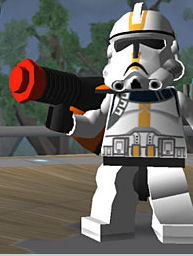Alla base dell'agopuntura c'è l'idea che le malattie siano dovute a degli squilibri energetici nel chi. Per curare le malattie sarebbe quindi sufficiente riequilibrare il chi andando ad agire in particolari centri dove il chi si accumula. Recentemente è stato pubblicato uno studio tedesco [1] che mette a confronto i metodi della medicina "ufficiale" (anti-infiammatori, fisioterapia e anti dolorifici) con l'agopuntura e i risultati sembrano indicare che l'agopuntura funzioni meglio. Per essere più preciso devo dire che lo studio è presentato dai media in questi termini.
"Mal di schiena: meglio gli aghi delle pillole" dicono.
La realtà è che, pur essendo vero che nello studio i pazienti che sono stati trattati con agopuntura hanno avuto un tasso di miglioramento del 46%, mentre solo il 26% dei pazienti trattati con metodi "ufficiali" ha avuto benefici, bisogna prestare attenzione prima di trarre conclusioni. Per come è stato condotto, lo studio non permette di trarre conclusioni sull'efficacia dell'agopuntura rispetto alla medicina "ufficiale".
Per capire la questione dobbiamo studiare i dettagli; del resto la scienza o la si fa in modo rigoroso o non la si fa, giusto?
Nello studio sono stati prese 1162 persone affette da dolori lombari; i pazienti sono stati divisi in tre gruppi: al primo sono state sommiministrate cure "ufficiali", al secondo l'agopuntura secondo le regole tradizionali, al terzo l'agopuntura 'sham', che fondamentalmente consiste nel piantare gli aghi a caso, non nei posti dove "il chi si accumula".
L'unica conclusione che lo studio permette di trarre è che l'agopuntura classica e l'agopuntura sham hanno la stessa efficacia; lo studio confuta quindi la teoria del chi. I soggetti erano in grado di capire quale cura veniva somministrata loro; non si è trattato di un test cieco. Il metodo applicato non permette di escludere fenomeni quali l'effetto placebo o altri tipi di condizionamento che non sono legati all'agopuntura. Le conclusioni sulle differenze o meno dei due tipi di agopuntura sono lecite perchè i pazienti non avevano modo di distinguere i due metodi.
La vicenda dimostra ancora una volta come i giornalisti spesso non siano in grado di trattare argomenti scientifici. I giornalisti hanno lo scopo di (in)formare i loro lettori, ma ho già più volte mostrato che non sono all'altezza del compito. E quindi l'opinione pubblica rimane scientificamente ignorante con gravissime conseguenze.
L'articolo è stato commentato (più in dettaglio) anche da:
Steve Novella
Orac
Ben Goldrace
e poi dicono che i blog non sono fonti di informazioni affidabili...
---
Acupunture's rationale is that all diseases are caused by unbalanced energy (or chi); according to this theory in order to treat all dieseaes it is enought to restablish balance in the chi. This can be achieved by sticking needles in specific points where the chi accumulates. Recently a group of German researchers published a study [1] that suggest acupuncture works better than official medicine. I should be more precise and write that the media think that the study suggest that.
Needles 'are best for back pain', they say.
The reality is that, although this study shows that acupuncture had a success rate of 46% while official medicine only of 26%, the numbers don't allow us to compare acupuncture against official medicine.
To understand the issue we need to dwell on the details; after all science is a rigorous method and details are important, right?
1162 subjects took part to the study; they all suffered from chronic back pain. They have been divided into three groups: the first one was treated with official medicine, the second one with traditional acupuncture and the third one with "sham" acupuncture which basically consists of sticking needles at random without aiming for the "chi points".
The only definitive conclusion that the study allows to draw is that classical acupuncture and sham acupuncture have the same rate of success, meaning that the chi theory is not true. The subjects were aware of what kind of treatment they were subjected to; it was not a blind trial and therefore the study doesn't allow to rule out effects such as placeo
bo and other conditioning. Conclusions on the differences between the two forms of acupuncture are licit because the subjects were not able to tell which kind of acupuncture they were getting.
This story shows that journalists are not able to treat scientific subjects. Journalists have the duty to (in)form their readers, but I have already shown that they are not up to the role. Public opinion is scientifically ignorant and this has serious consequences.
The scientific paper has been (more thoroughly) commented also by:
Steve Novella
Orac
Ben Goldrace
and then they say that blogs are not dependable...
[1] German Acupuncture Trials (GERAC) for Chronic Low Back Pain: Randomized, Multicenter, Blinded, Parallel-Group Trial With 3 Groups Michael Haake; Hans-Helge Müller; Carmen Schade-Brittinger; Heinz D. Basler; Helmut Schäfer; Christoph Maier; Heinz G. Endres; Hans J. Trampisch; Albrecht Molsberger. Arch Intern Med. 2007;167:1892-1898.
Thursday, September 27, 2007
agopuntura - acupuncture (scroll down for English)
Subscribe to:
Post Comments (Atom)

No comments:
Post a Comment